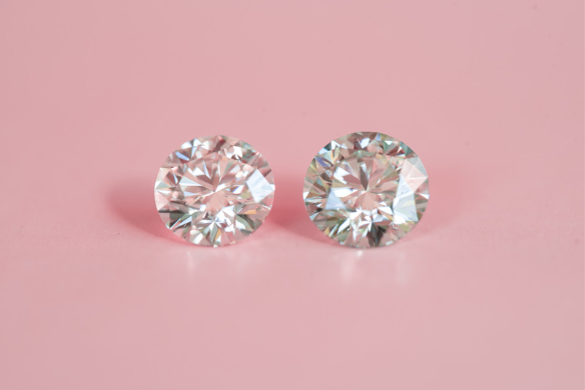Man-Made Diamonds: 2016 and Beyond

Somewhere around 2013, the first gem quality man-made diamond was produced, and all those who earlier believed that man-made diamonds could never be close to the “real thing” had to eat humble-pie. With lab-grown diamond detection machines now being available aplenty, people making proverbial “hay while the sun shines” will have no choice but to soon completely stop surreptitious mixing of lab-grown diamonds with natural-diamond parcels. Testing will become more commonplace as consumers become more educated about man-made diamonds. Having said that, currently, the small HTHP diamonds coming largely from China in rough form are difficult to detect once set in jewellery.
Everyone seems to realise that lab-grown diamonds as a legitimate category in their own right have a bright future in the long run. They do not come with any possibility of a questionable history with regard to impact on the environment or human rights issues. These are immense issues of concern to millennial consumers. Plus, lab-grown diamonds come with a cheaper price tag. There is reported to be a growing segment of young women in the US market actively seeking to buy man-made diamonds because of its virtues of being “clean” and “green”. The rest of the world is likely to follow suit, as lab-grown diamonds are an embodiment of conscious consumerism, which is very important to the global millennial consumer. These benefits must be espoused while marketing this category.
Natural diamonds on the other hand will always have their own special place in the market. They will in fact become consistently and considerably rarer as time goes by, because not many new mines are being discovered, and existing ones have limited supplies. The appeal of a natural diamond’s “exclusivity” will grow hugely with time.
How things will pan out in the very near future, is anyone’s guess, but, in spite of all resistance, manmade diamonds will emerge as a much sought-after product in years to come. Indeed, stalwarts of the industry are spot-on when they draw parallels with the co-existence of natural and cultured pearls.
While everyone seems to accept the reality that man-made and natural diamonds will co-exist in the long-run, why is it that not too many players have been entering the legitimate lab-grown diamond jewellery space so far? Why don’t we see more retail outlets selling lines of jewellery made from man-made diamonds sold as manmade diamonds? Wouldn’t there be a tremendous benefit in being one of the first movers in this space? What exactly is the future for man-made diamonds, let’s say – in the next one year?
The long-term future points to a scenario where producing man-made diamonds might become as commonplace as some other “cottage industries” in villages across Gujarat, where every other home might have a diamond cutting / polishing wheel. However, there is not likely to be an explosion of companies selling lines of man-made diamonds in the year 2016. What are some of the reasons for this?
Manufacturing Lab-grown diamonds is an expensive affair and is not that easy. Currently, production of man-made diamonds is just 2% of mined diamonds. According to a recent report in Economic Times, a CVD lab with two reactors costs nearly Rs 10 crore. Different models of reactors - imported from USA, Germany and Japan - cost between Rs 80 lakh and Rs 6 crore. The labs need scientists. Candidates must have a masters' degree or a PhD in material physics. There are just about 500 such experienced scientists in the world. Moreover, at least 10 or 12 reactors would be needed to make business viable.
There are only a handful of companies that have managed to crack formulae for CVD or HPHT diamonds. With millions of dollars having been pumped into research, needless to say companies that have managed to produce gem-quality man-made diamonds have been guarding their methods like “state-secret”! Still, according to industry sources, nearly 50 culture diamond manufacturers have started lab trials in India alone over the past two years.
Existing Lab-grown Diamonds Manufacturers across the globe may be currently seeing more profit in selling to the natural diamonds market. There may currently be more profitability for manufacturers of HPHT and CVD stones to sell their produce to someone along the natural diamonds supply chain. This is indeed unfortunate, because it is tarnishing the image of both segments and the jewellery industry as a whole.
Existing diamond traders seem to be afraid that dealing in lab-grown diamonds will tarnish their image. Withall the negative publicity that has ensued from cases of surreptitious mixing of lab-grown diamonds in natural diamonds parcels, existing traders are understandably afraid of being linked with man-made diamonds even as a legitimate separate product. Having said that, now is the perfect time for even entrepreneurs from outside the industry to get into this space, because there is a lot of advantage to be gained from being a first-mover.
If we at GemAtlas were to hazard a guess – the near future will probably see existing manufacturers up their production capacities of man-made diamonds. In the long-term, as people involved with manufacturing processes start moving jobs, etc, word of the exact technology involved and its implementation will get out and more companies will get into the production space. As more and more companies enter this space, supplies of lab-grown diamonds will steadily start increasing. A few jewellery manufacture and retail players will enter the space of lab-grown diamonds – maybe across the West, Singapore, Hong Kong, Korea. Coloured diamonds will become popular, because labs are able to create very good quality of coloured stones.
Will lab-grown diamonds be mass-produced in the long-run? Will this mean that prices will fall and they will offer no real resale value? – probably. But, for now – they seem to be as amazing as natural diamonds in their appeal, because we are all still reeling with the fact that man is now able to produce what nature takes millions of years to.

